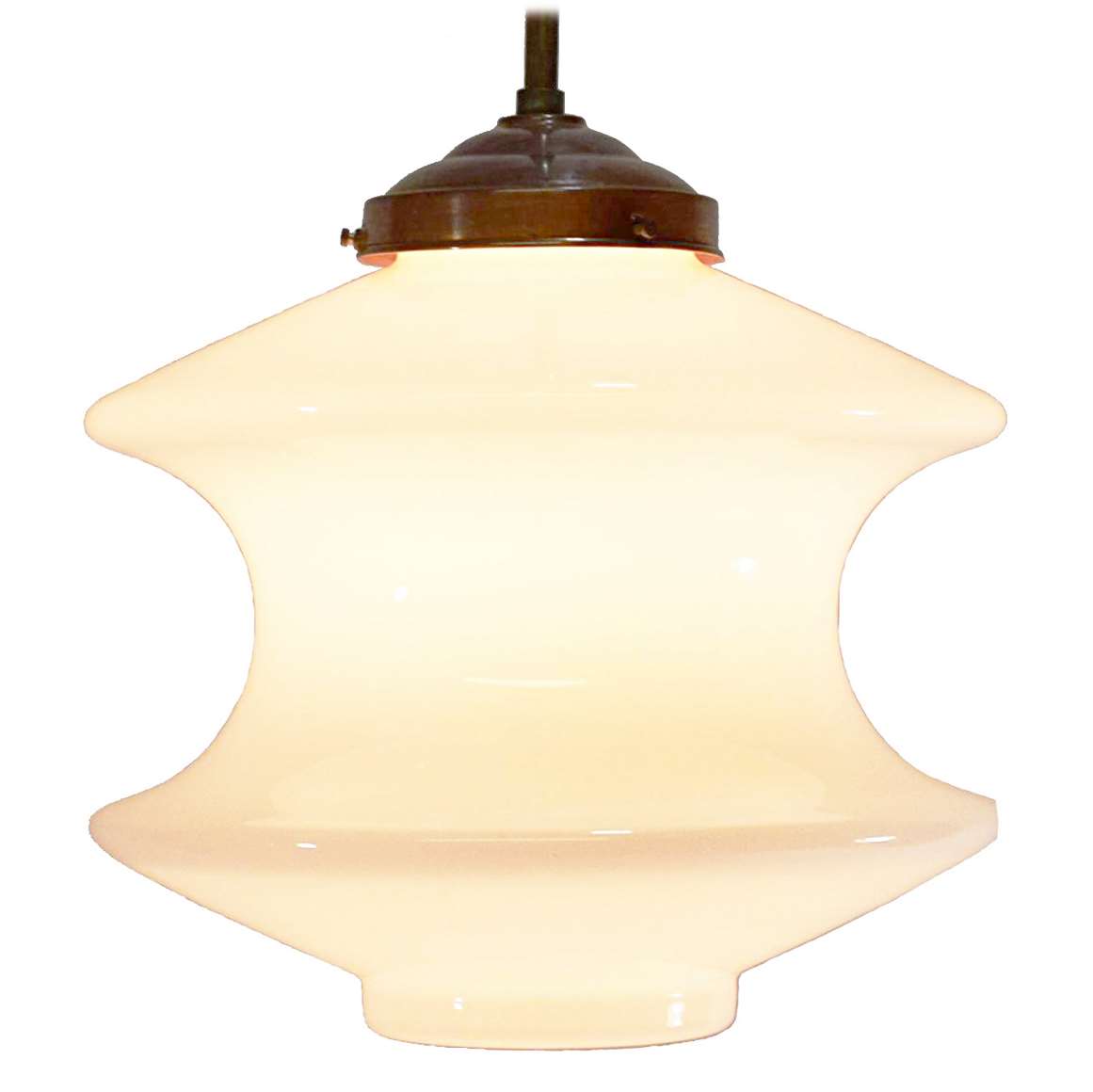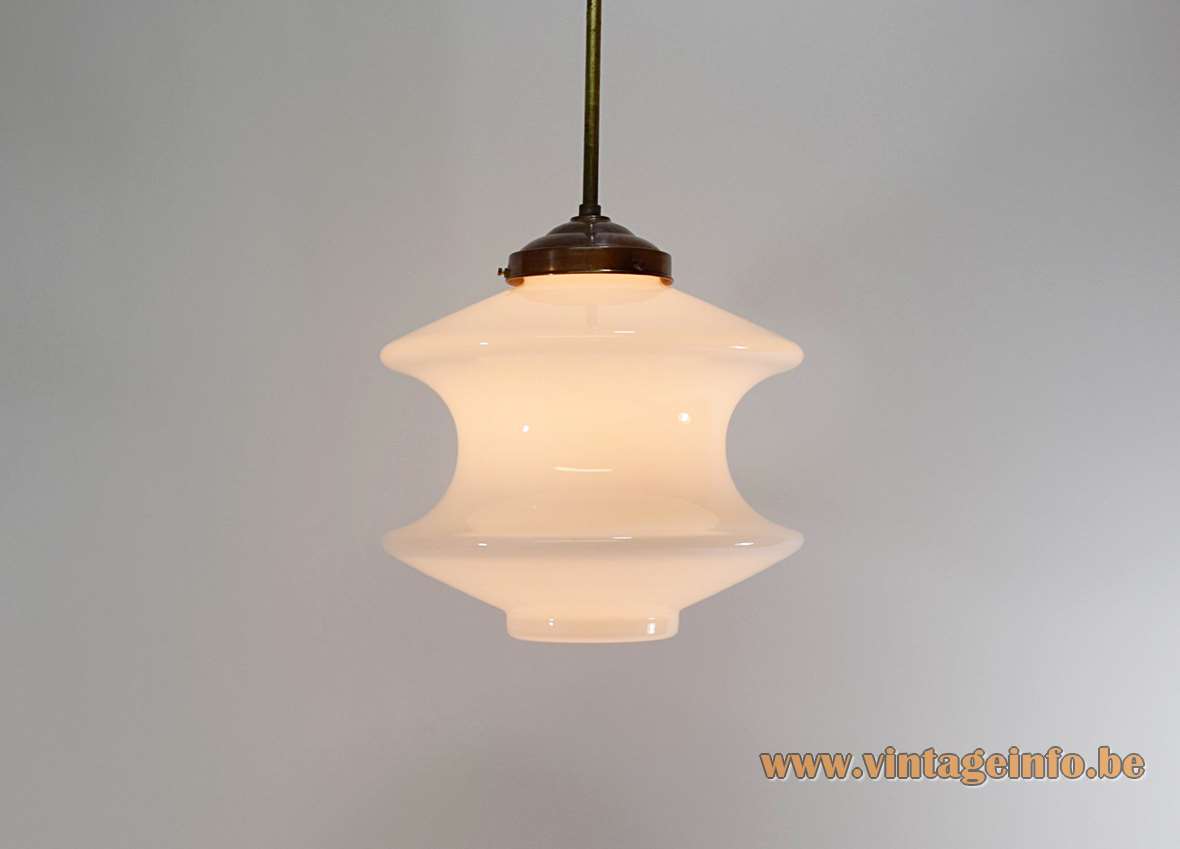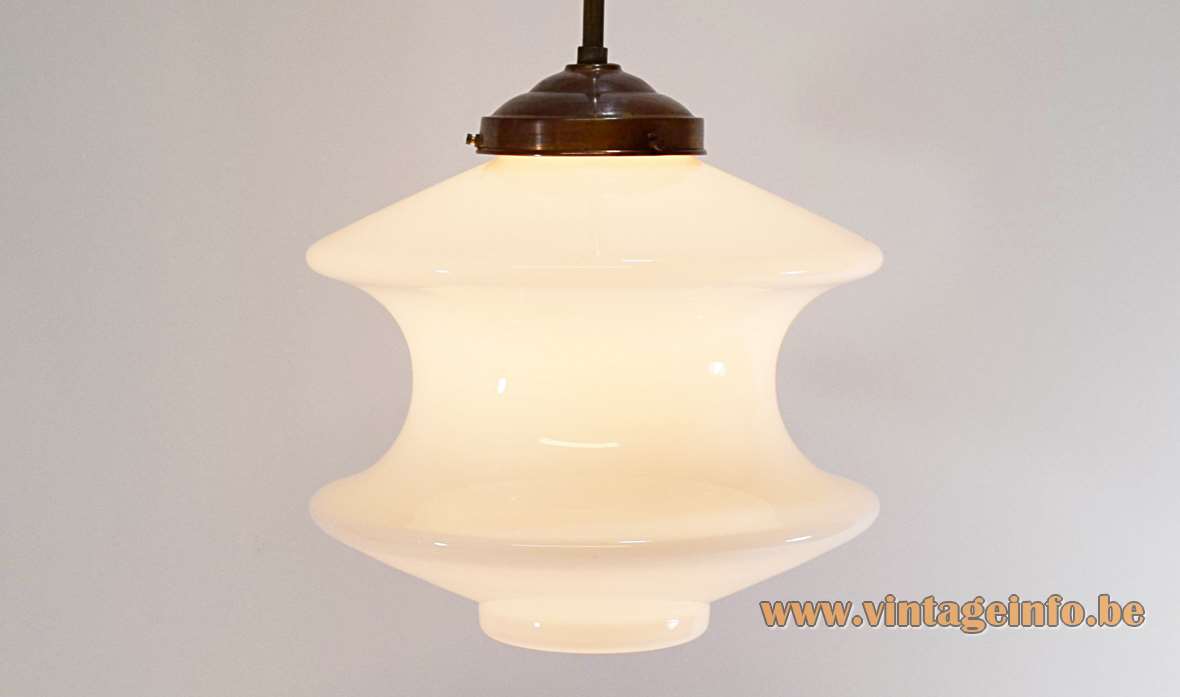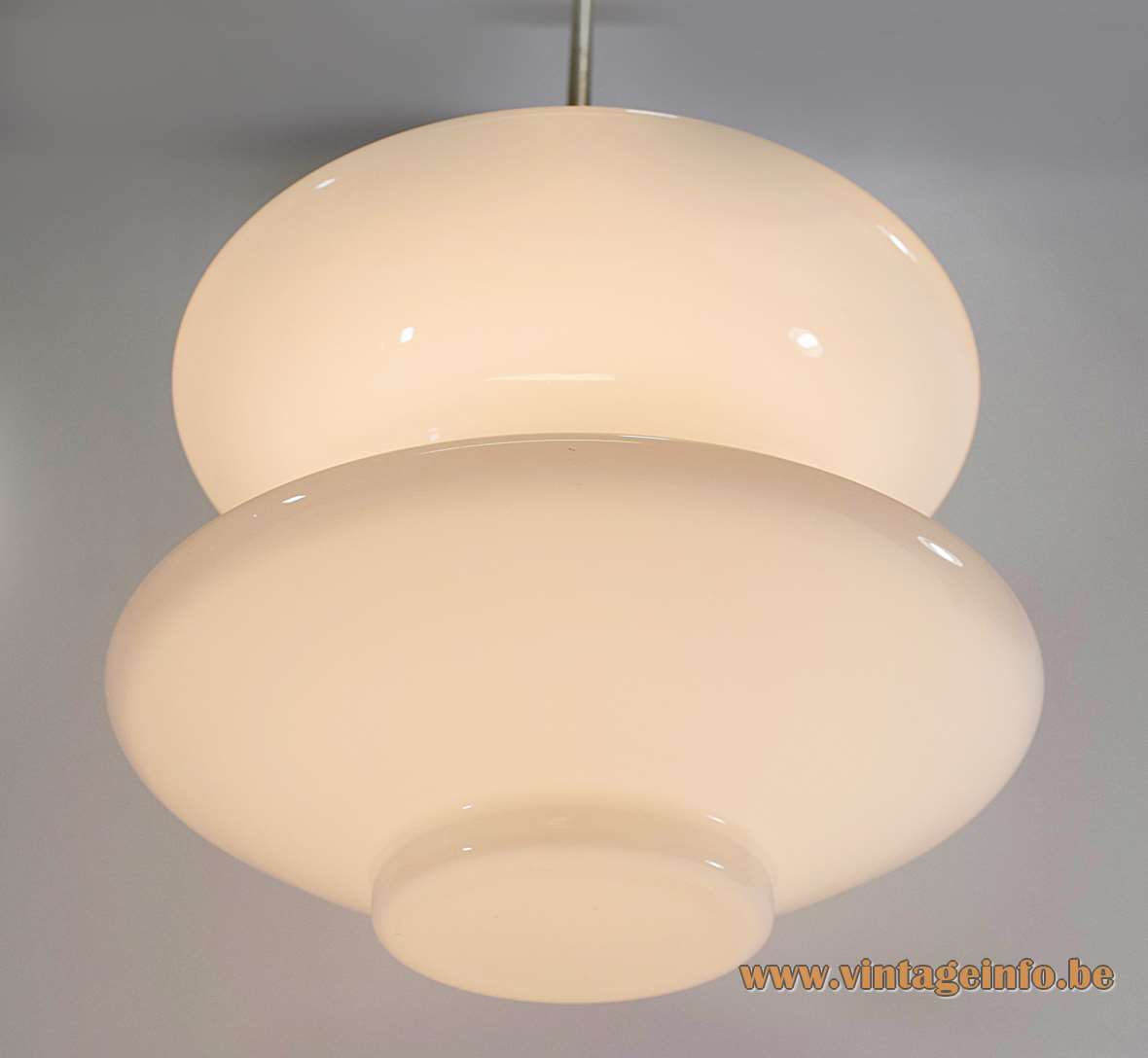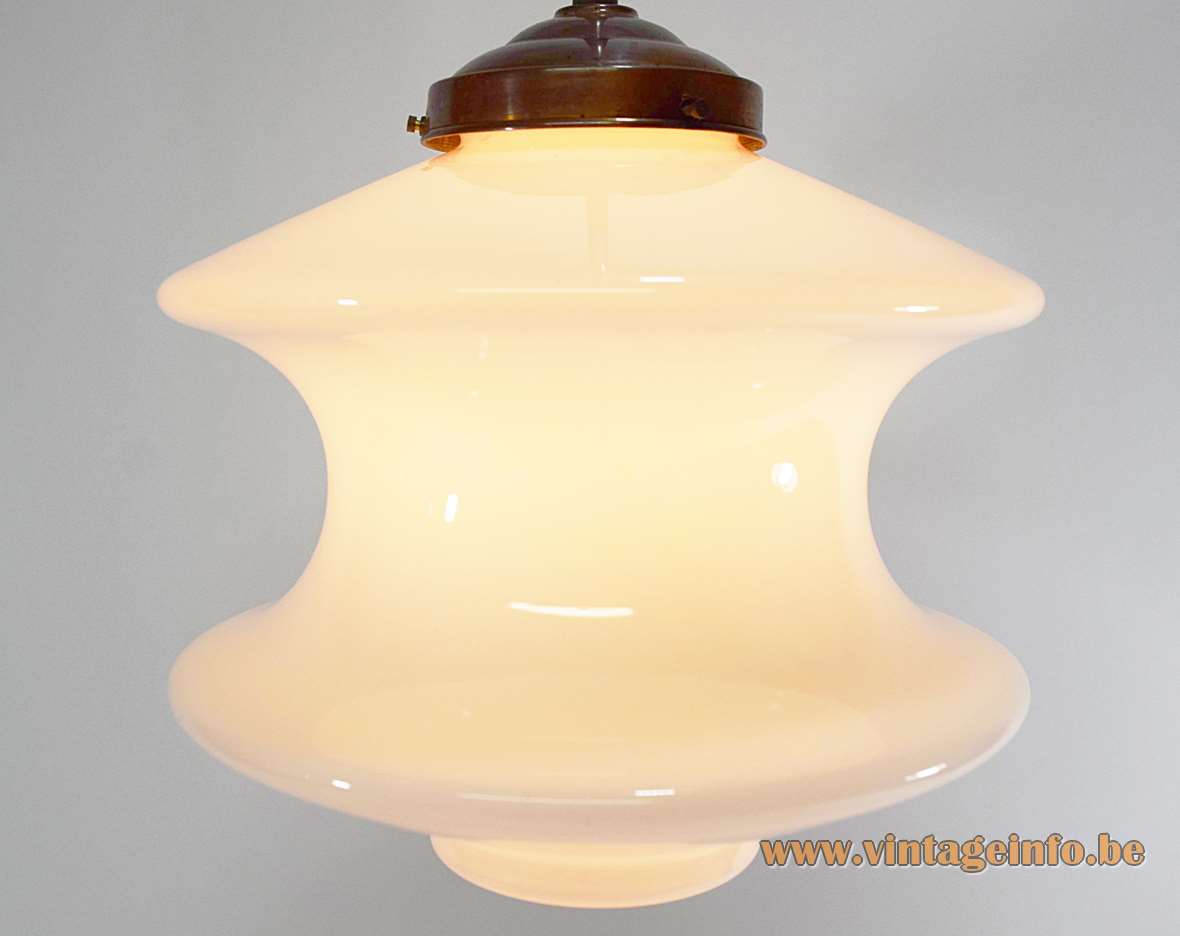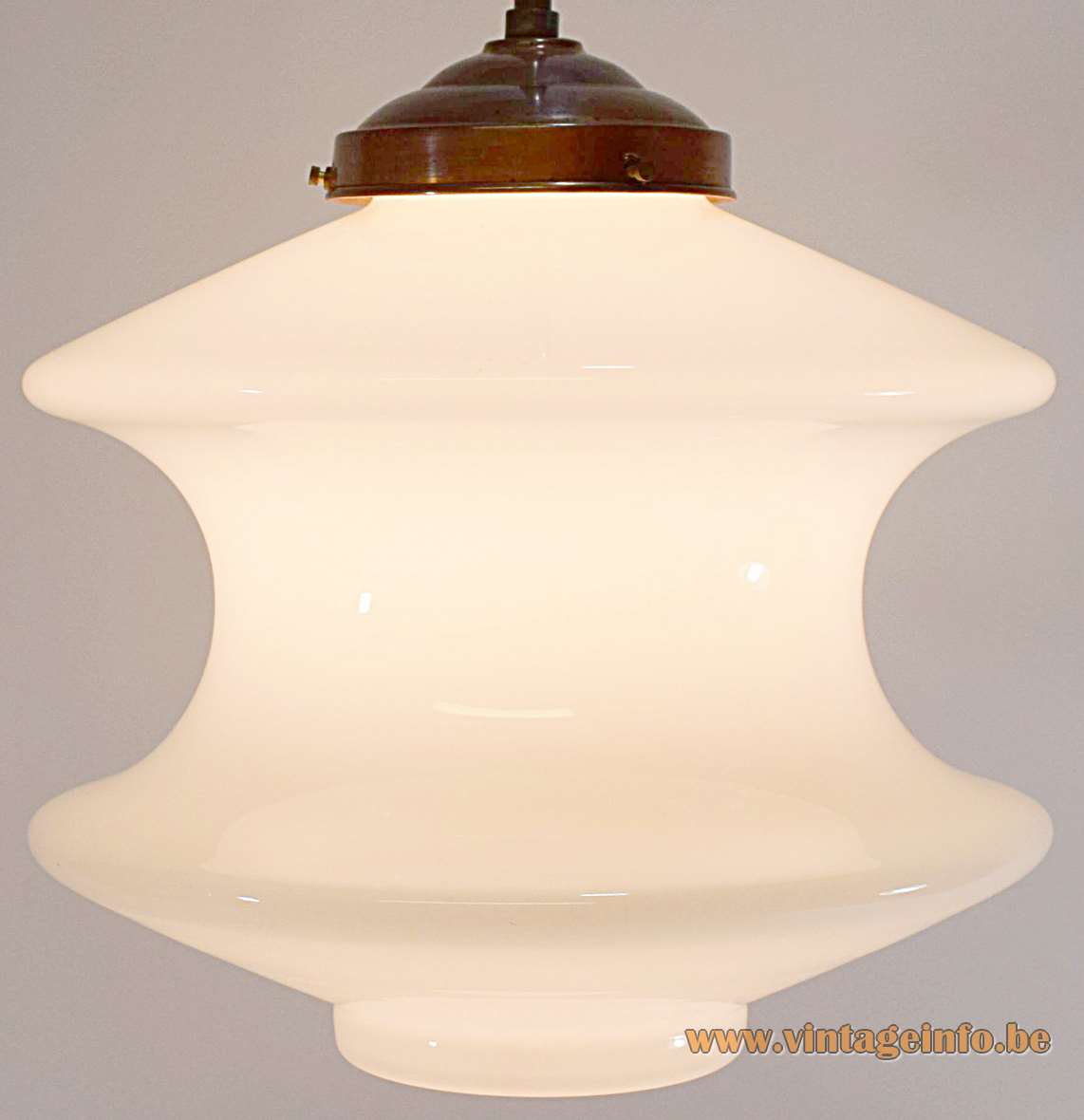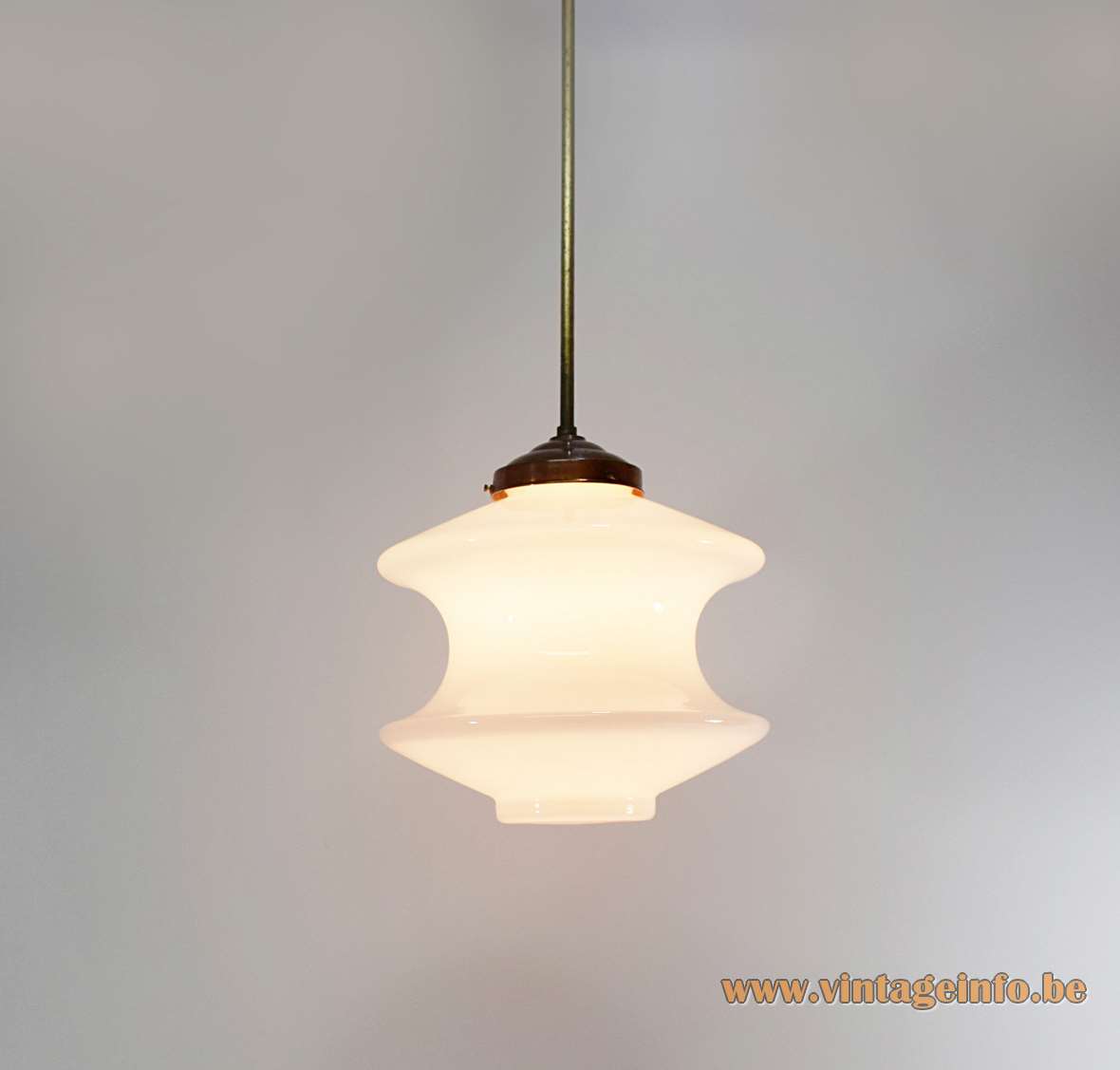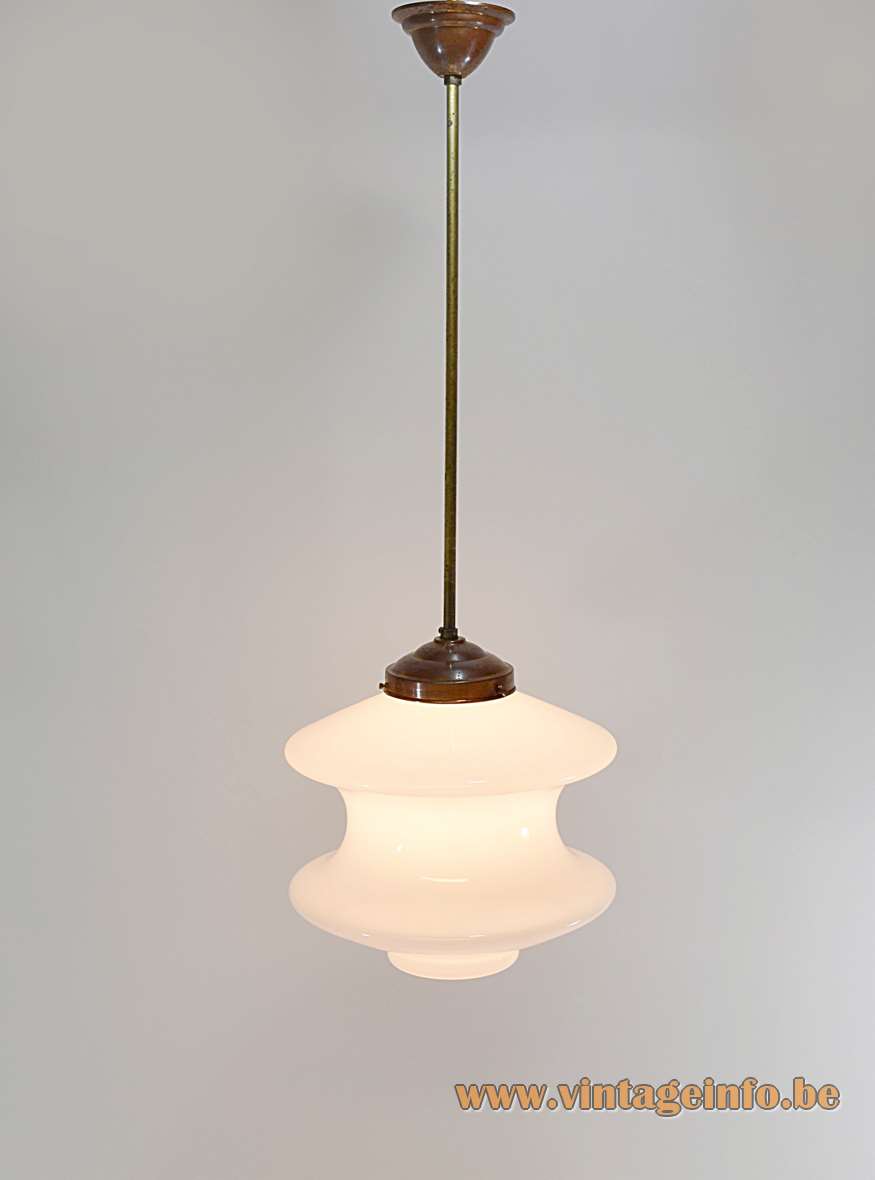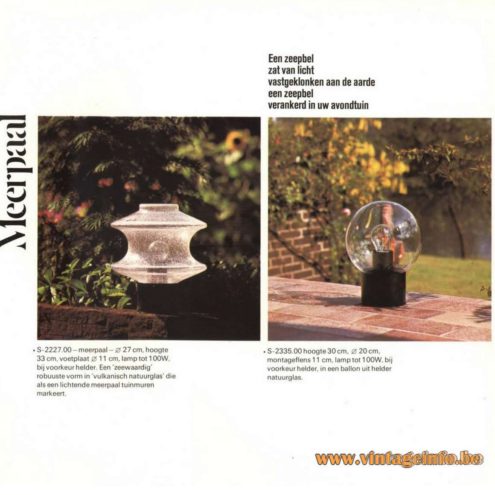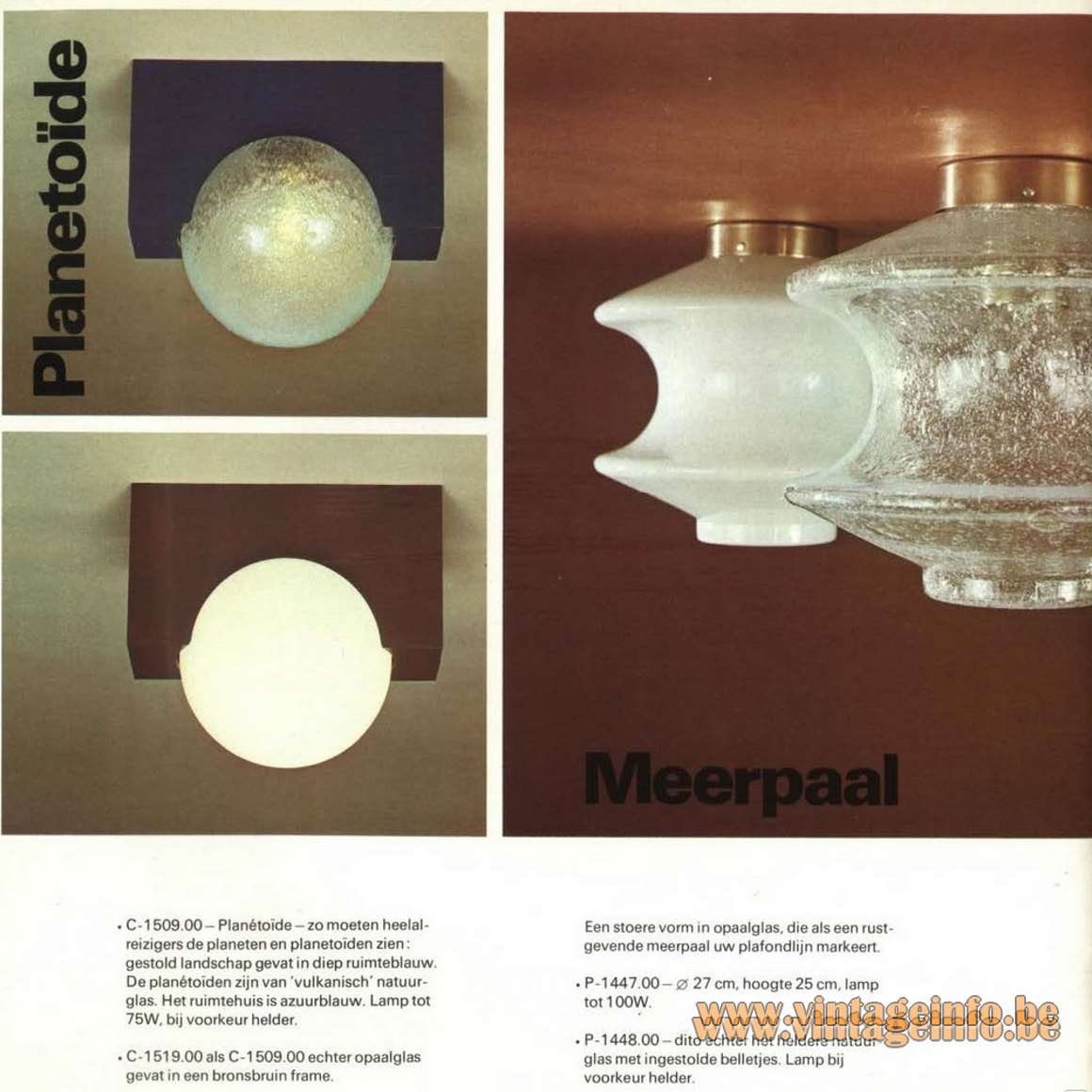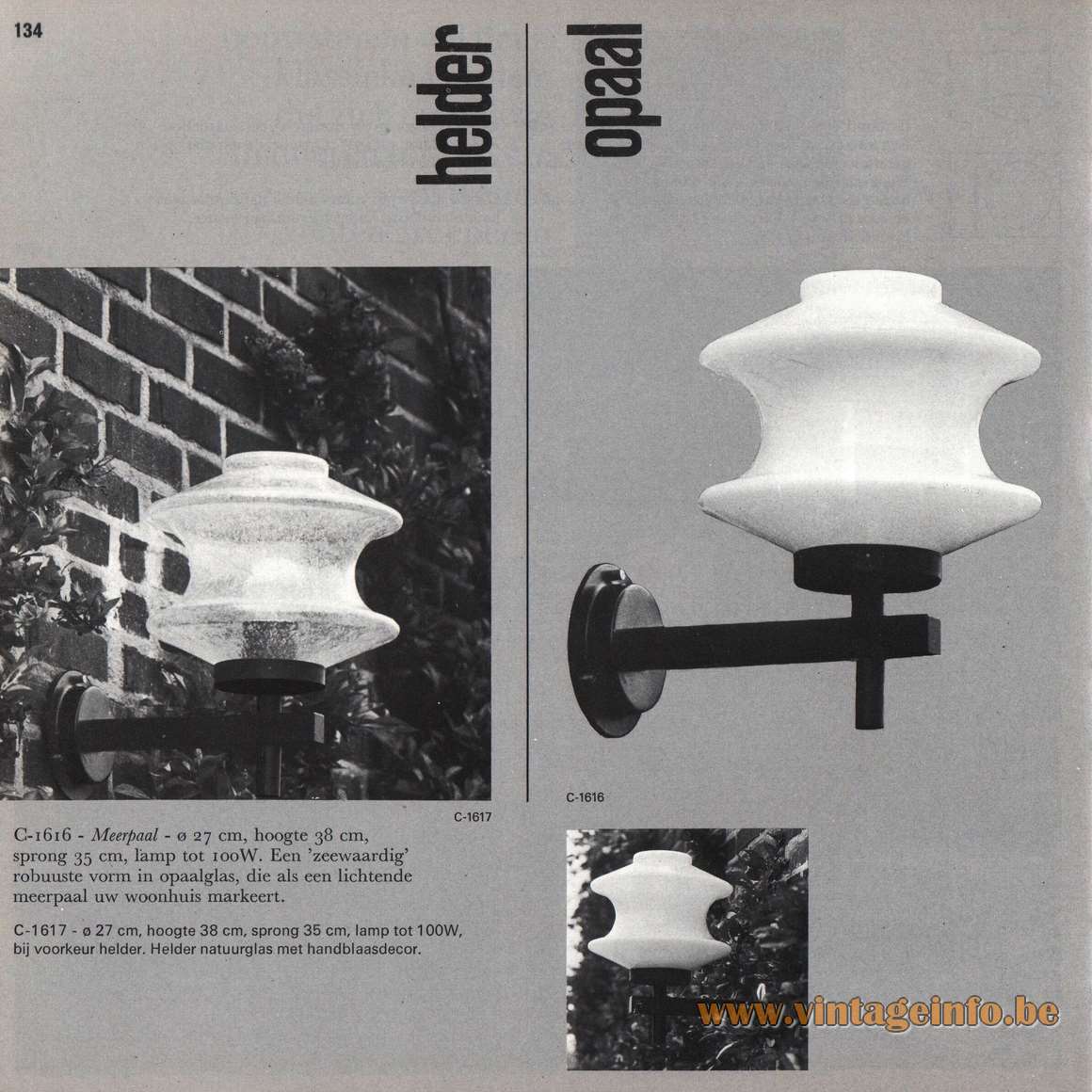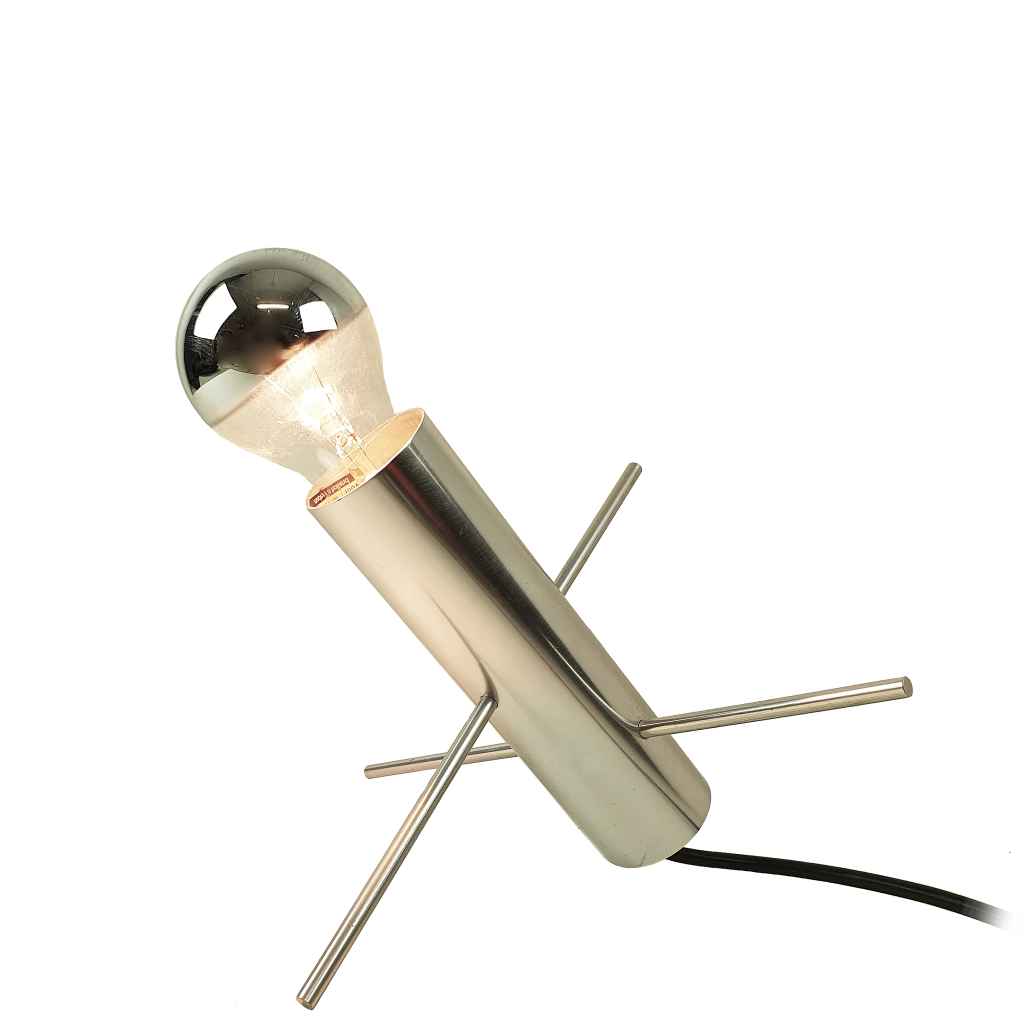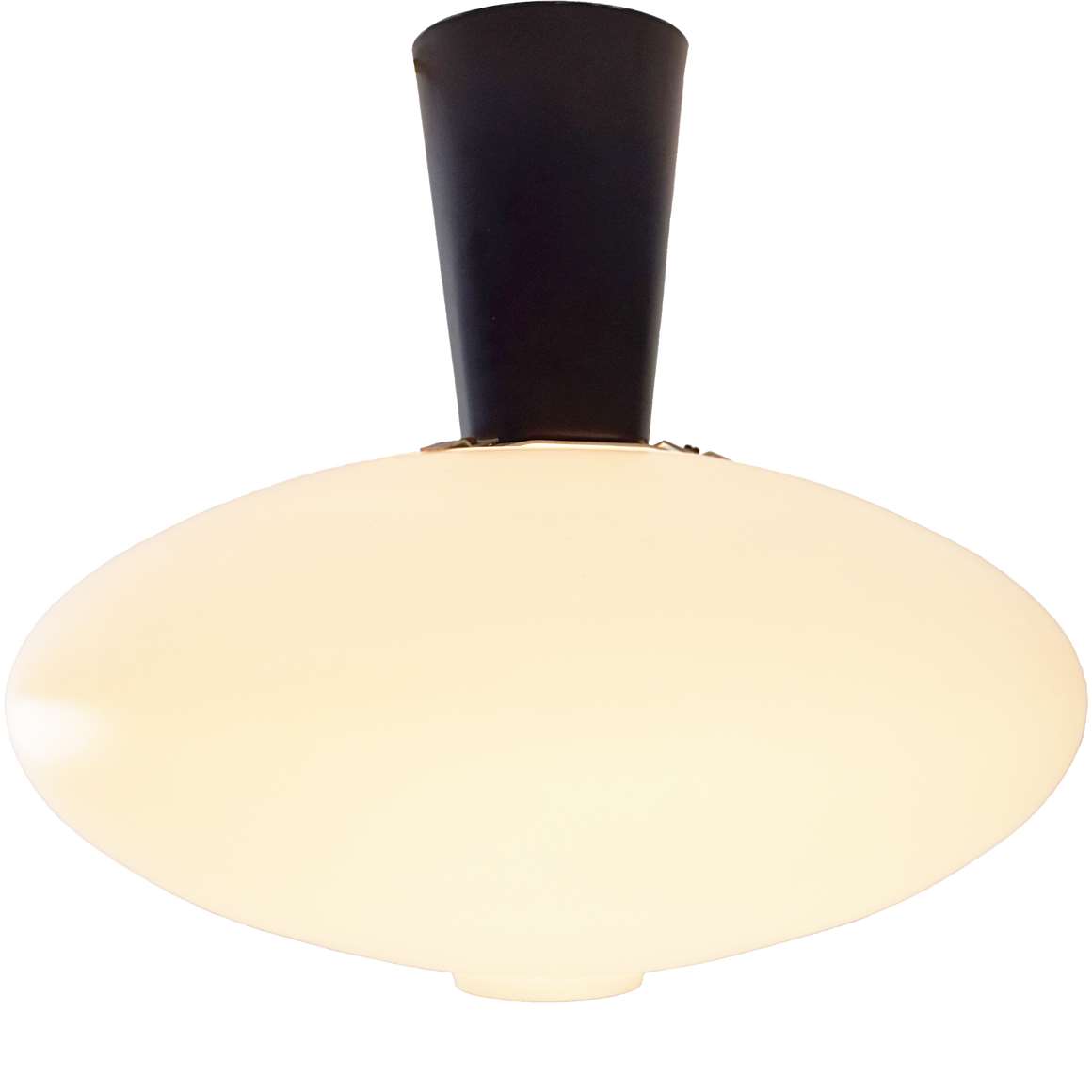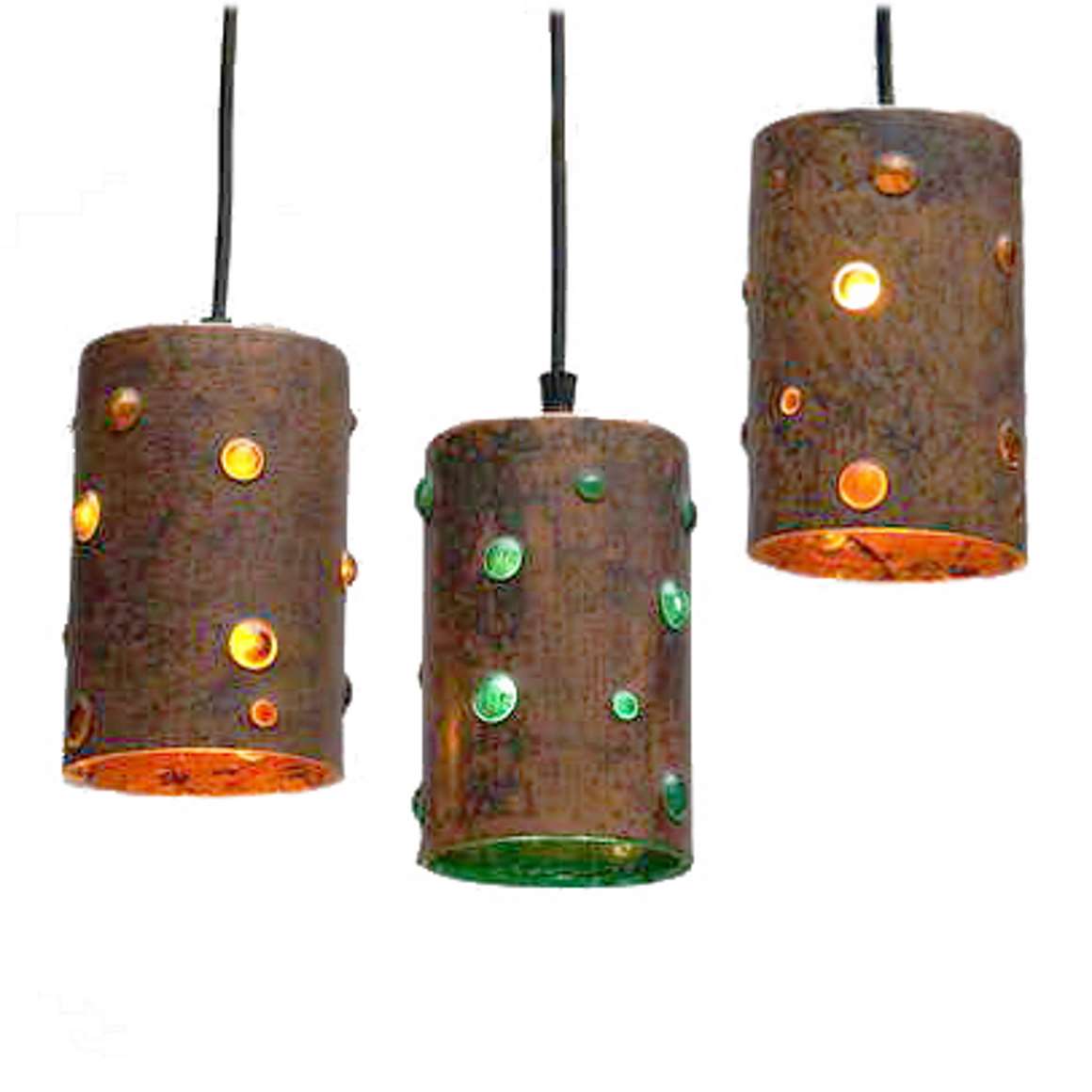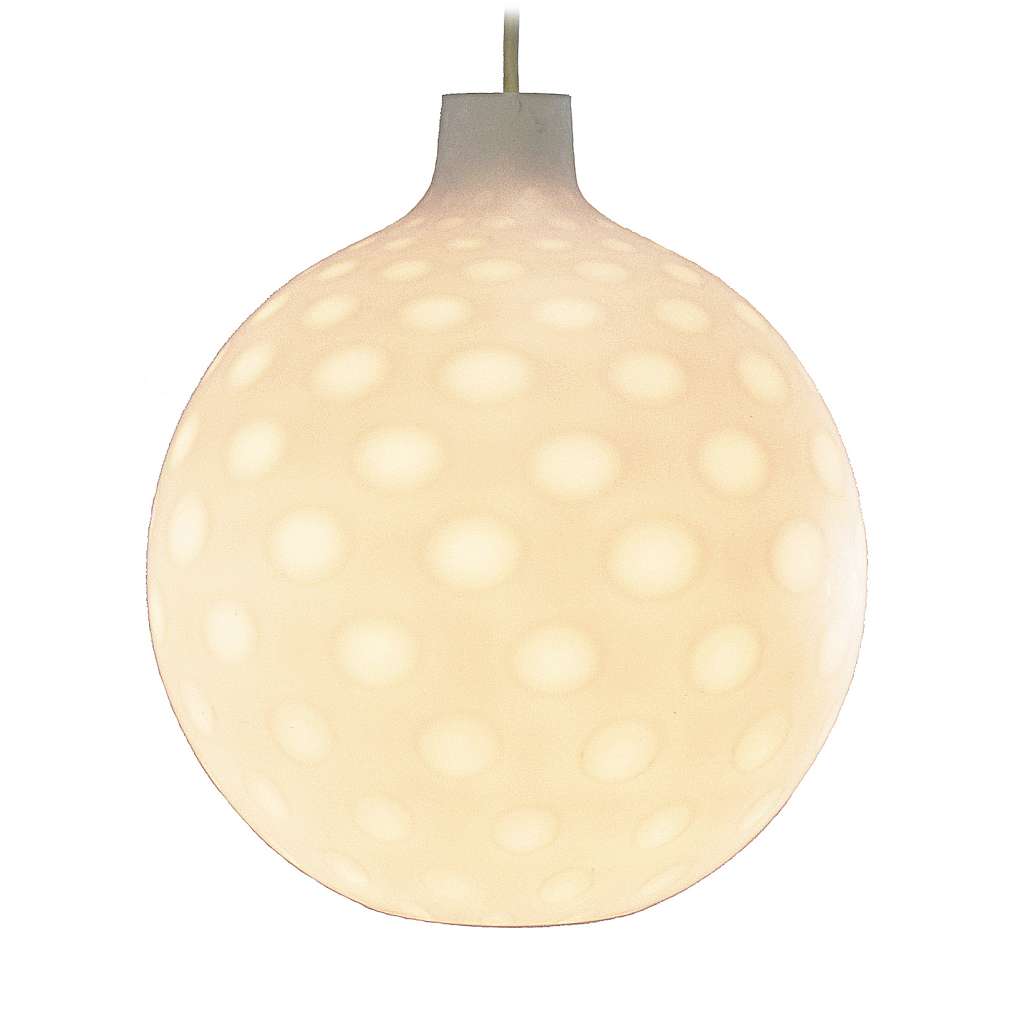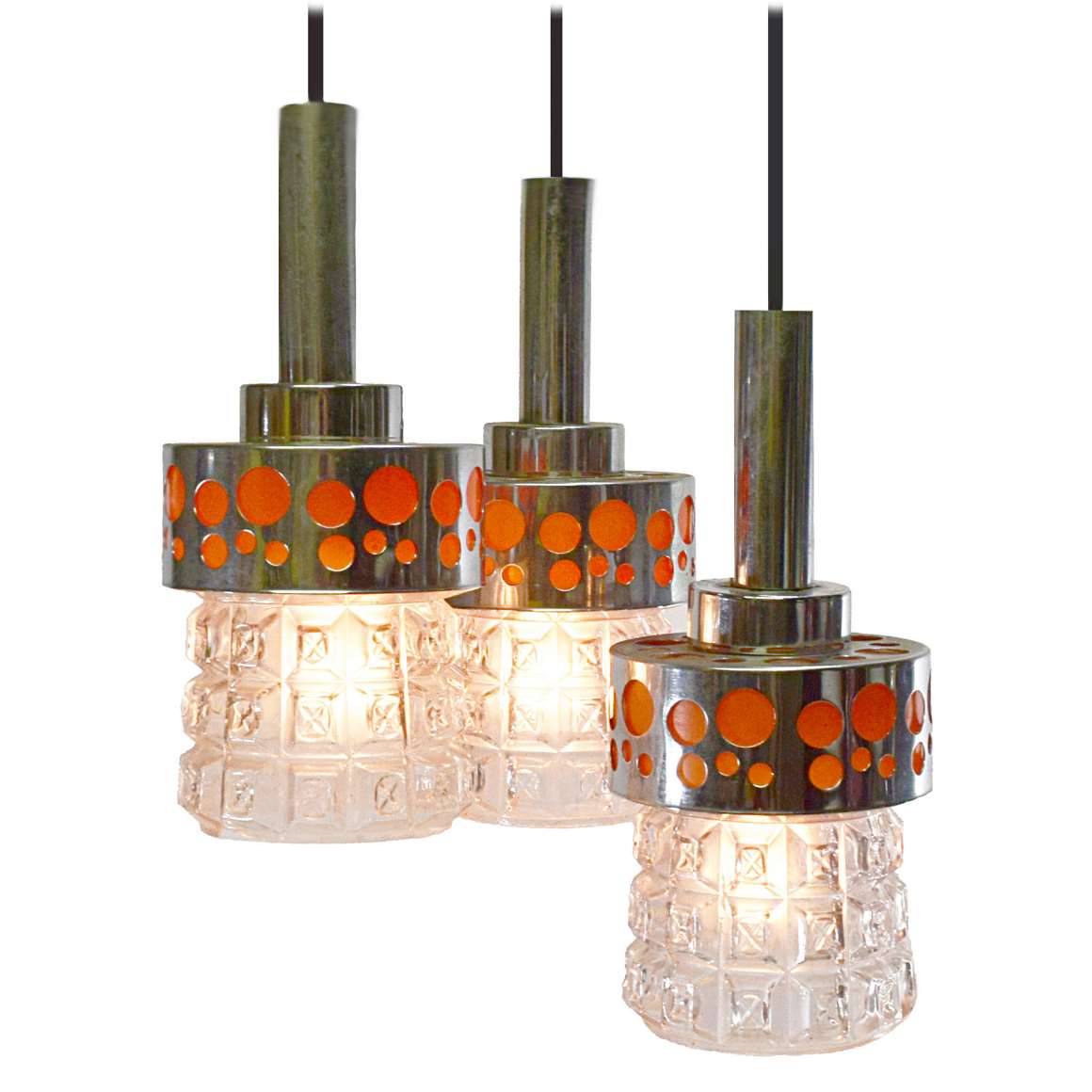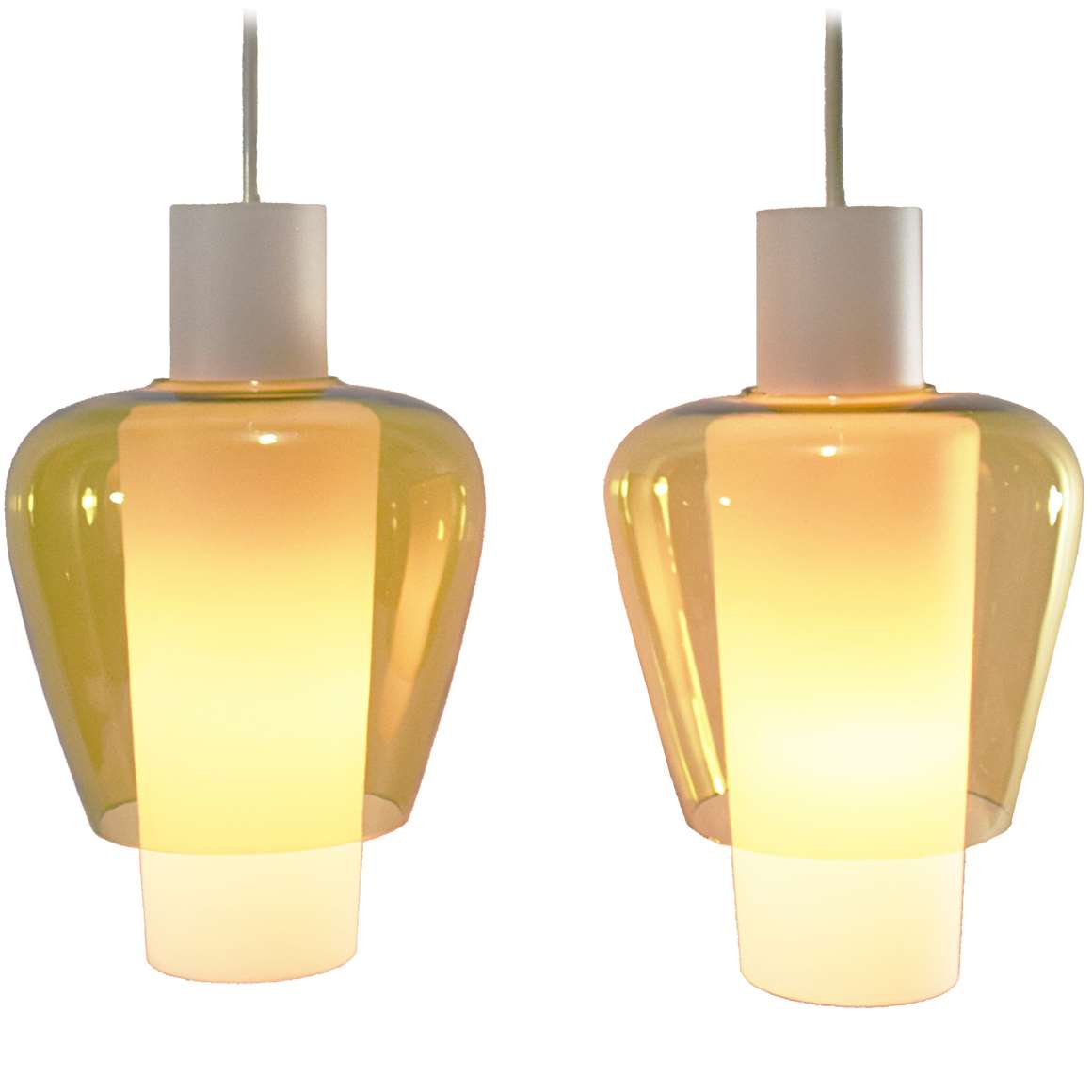Raak Meerpaal Pendant Lamp
Materials: White opal glass bollard style lampshade. Copper parts, rod and canopy. Metal E27 socket.
Rod length: 80 cm / 31.49”
Height: 28 cm / 11.02”
Width: ∅ 25 cm / 9.84”
Electricity: 1 bulb E27, 1 x 100 watt maximum, 110/220 volt.
Any type of light bulb can be used, but a white/opaque or frosted one is preferred when used in an opal glass light. Clear bulbs creates stripes on the lampshade and therefore also on the walls.
Period: 1960s – Mid-Century Modern.
Designer:To be appraised.
Manufacturer: Raak, Amsterdam, The Netherlands.
Other versions: The Raak Meerpaal pendant lamp exists in white opal and pulegoso glass (bubble glass – “vulkaanglas” – vulcan glass). Made as a wall lamp, a flush mount, a pendant lamp and a garden lamp.
Meerpaal: bollard, mooring post, bitts.
The copper parts of this pendant lamp are not original.
Raak
The Dutch company Raak Lichtarchitectuur (Light architecture) was founded in 1954 by Carel O. Lockhorn (18 June 1923 – 6 October 2004), a previous employee of Philips Lighting Eindhoven. Raak, which means “to hit” in Dutch, implies design which precisely “hits the nail on the head”.
Raak is best known for their organic modern design of the 1960s and 1970s which combined glass & metals for a sophisticated futuristic style.
Designers
The light company collaborated with several international designers and architects, including Bertrand Balas, Evert Jelle Jelles, Frank Ligtelijn. Ger Vos, Jan Jasper Fayer, Li Helo, Maija-Liisa Komulainen. Nan Platvoet, Nanny Still-Mackinney, Nico Kooi. Sergio Asti, Tapio Wirkala, Willem van Oyen and many others.
Collaborations
Raak also collaborated with other companies. They worked with the German Peill+Putzler for the Raak Globe lamps. Peill+Putzler produced the glass. They also sold lamps made by Peill+Putzler, such as a pendant lamp designed by Aloys Ferdinand Gangkofner. For the Raak Discus the glass was made by Bega, also a German company. For the Stalactites flush mounts a cooperation with the Belgian Val Saint Lambert was undertaken in the late 1950s. Raak also sold some lamps that were produced by Staff Leuchten (Staff & Schwarz Leuchtenwerke GMBH) from Germany. iittala from Finland produced the glass for the lamps that were designed by Tapio Wirkkala. Raak collaborated with many other producers of lighting.
Carel Lockhorn sold the company in 1974 to ITT but remained a director until 1977. In 1980 Raak merged with BIS Lighting from Aalsmeer, also in The Netherlands and was renamed into BisRaak. In 1986 the Raak company became independent again. The company got a business appearance and only the colours white, black and grey were still processed.
In 1999, Raak merged with Artilite B.V. and Indoor B.V. and became CLA: Centrum voor Lichtarchitectuur B.V. in Drachten (Centre for Light Architecture). The Centre for Lighting Architecture was founded by Egbert Keen. The company was declared bankrupt on 19-05-2011.
Pulegoso
Pulegoso: Italian word taken from the dialect word pulega, which means bubble. The glass is containing numerous bubbles of all sizes, produced by adding bicarbonate/soda, gasoline, or other substances to the glass. The bubbles make the glass semi-opaque and give the surface an irregular texture. The technique was developed in the 1920s by Napoleone Martinuzzi (1892-1977) on the island of Murano, Italy and used for the first time by the famous Venini company.
Links (external links open in a new window)
Vintageinfo
The Meerpaal lamp in the Raak Catalogue 9 from 1972 as a ceiling lamp
Meerpaal garden light – Raak Catalogue 9
